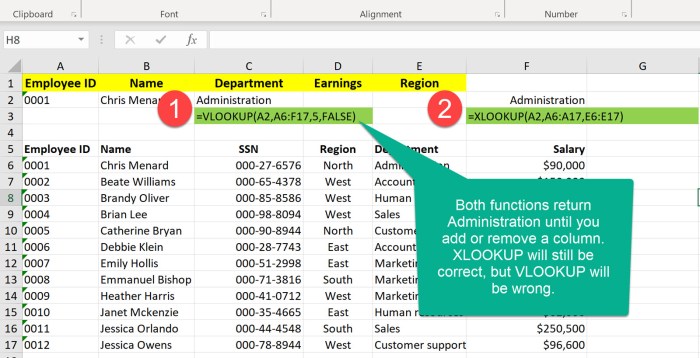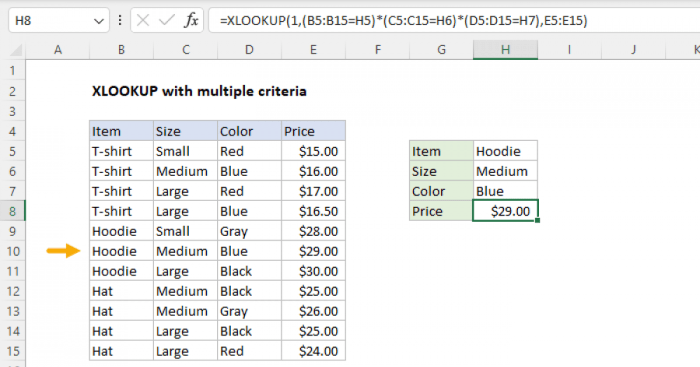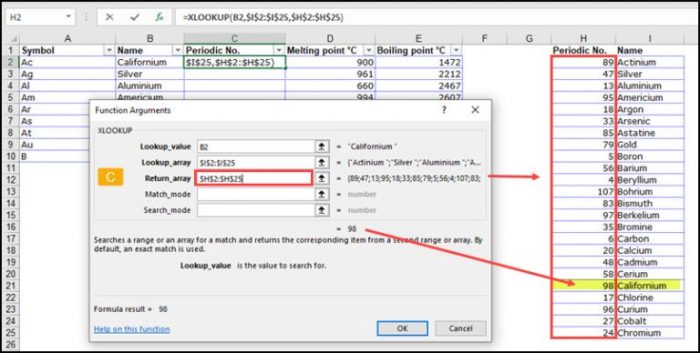Array arguments to xlookup are of different size – Array arguments in the XLOOKUP function can vary in size, leading to potential errors or limitations. Understanding the consequences and handling these size mismatches is crucial for accurate and efficient data processing.
This article explores the different data types that can be used for array arguments in XLOOKUP, discusses the impact of mismatched data types, and provides strategies for handling size discrepancies.
Array Arguments to XLOOKUP Are of Different Size

When using the XLOOKUP function in Excel, it is important to ensure that the array arguments are of the same size. If the array arguments are of different sizes, the function will return an error or produce unexpected results.
Array Sizes Mismatch, Array arguments to xlookup are of different size
The XLOOKUP function requires that the lookup_array and return_array arguments be of the same size. If the arrays are of different sizes, the function will return the #VALUE! error.
For example, the following formula will return the #VALUE! error because the lookup_array and return_array are of different sizes:
“`=XLOOKUP(A1, B1:B5, C1:C3)“`
Array Argument Types
The XLOOKUP function can handle different data types for the lookup_array and return_array arguments. However, it is important to note that mismatched data types can affect the functionality and accuracy of the function.
For example, if the lookup_array contains text values and the return_array contains numeric values, the XLOOKUP function will return the #VALUE! error.
Handling Mismatched Array Sizes
There are several ways to handle situations where the array arguments in XLOOKUP are of different sizes. One method is to use the IFERROR function to trap the error and return a custom value.
For example, the following formula will return the value “Error” if the lookup_array and return_array are of different sizes:
“`=IFERROR(XLOOKUP(A1, B1:B5, C1:C3), “Error”)“`
Another method is to use the INDEX and MATCH functions to create a dynamic array that is the same size as the lookup_array.
For example, the following formula will create a dynamic array that is the same size as the lookup_array:
“`=INDEX(C1:C3, MATCH(A1, B1:B5, 0))“`
Best Practices for Array Arguments
To avoid size mismatches when using the XLOOKUP function, it is important to follow these best practices:
- Ensure that the lookup_array and return_array arguments are of the same size.
- Use the IFERROR function to trap errors that may occur due to size mismatches.
- Use the INDEX and MATCH functions to create dynamic arrays that are the same size as the lookup_array.
Example Table
The following table demonstrates the impact of array size mismatches in XLOOKUP:
| Lookup Value | Lookup Array | Return Array | Result |
|---|---|---|---|
| A1 | A1:A5 | B1:B5 | B1 |
| A1 | A1:A5 | B1:B3 | #VALUE! |
| A1 | A1:A5 | C1:C5 | #VALUE! |
FAQs
What happens when array arguments in XLOOKUP are of different sizes?
Size discrepancies can lead to errors or incorrect results, as the function expects arrays of the same size.
How can I handle mismatched array sizes in XLOOKUP?
Padding, truncation, or error handling techniques can be employed to resolve size discrepancies and ensure proper function execution.
What are the best practices for working with array arguments in XLOOKUP?
Ensuring consistency in data types, using appropriate padding or truncation methods, and implementing error handling mechanisms are recommended best practices.

